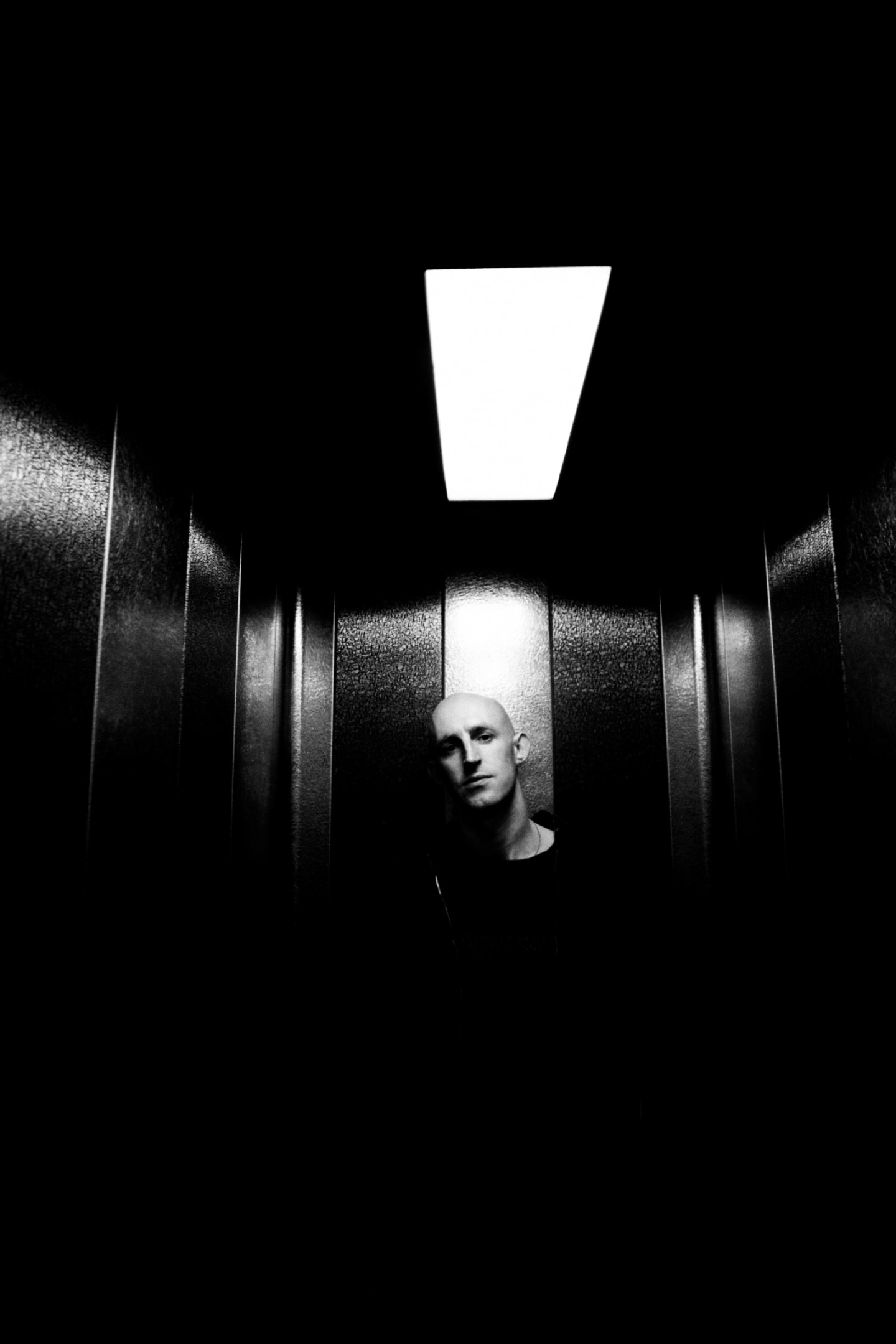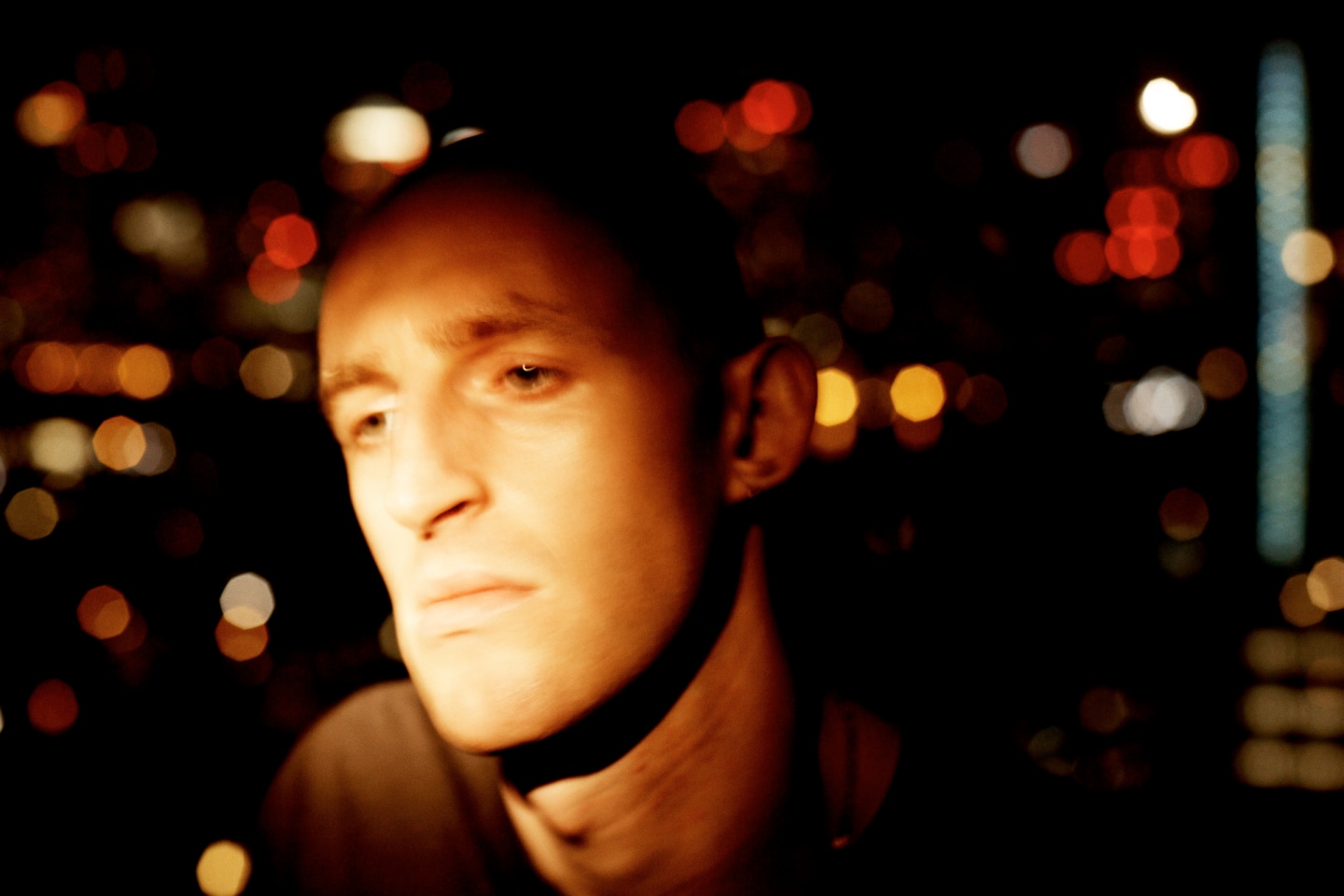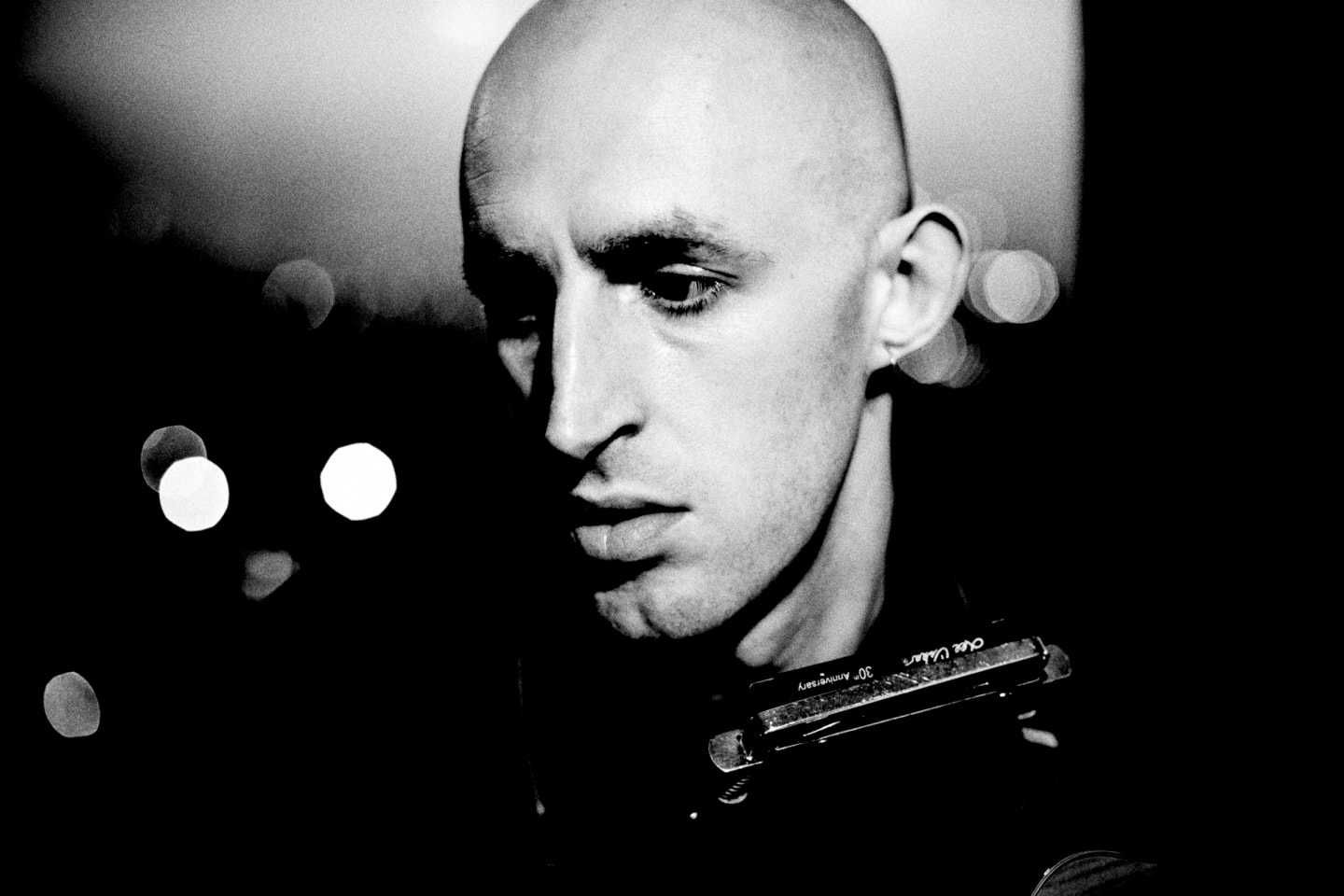mark william lewis. Photo by Steve Gullick
mark william lewis’s songs often paint him as someone that feels things a little more keenly than the rest. On “Tomorrow Is Perfect,” a highlight of his excellent and self-titled new album, he is the figure reminding others of “the way the sky burned” above a house “made of teeth and sand.” “Still Above,” meanwhile, pulls a more realistic image of London, a city he casts in concrete as home to cold winds, blinding phone lights, and “a shame I can’t escape.” His deep voice holds the weight of these weighty observations while layers of stacked guitars are accented with the melancholic trill of a lonely harmonica.
Sitting across a table at London’s ICA, a building he once worked out of in a former life as an arts journalist, Lewis is far less imposing than his soulful music might suggest. He speaks passionately about his influences, be it Vini Reilly’s guitar playing on The Durutti Column’s 1987 album The Guitar and Other Machines or the impressionist painter Frank Auerbach’s post-war renderings of London building sites.
“I’m more inspired by art than music in a way,” he says, explaining that he often wants a song to feel like a specific painting or the texture of thickly layered impasto paint. Many of the song titles on Mark William Lewis came from browsing art books in libraries across the city and using the images as prompts. What would a song named after Nan Goldin’s Skeletons, coupling sound like? To Lewis it’s a heartbreaking rumination of lost love with twin guitars that feel like the bones of two lovers interlocking.
“There are things I want to evoke in my music in a slightly more intangible way than just writing about them directly,” he says of his approach to songwriting. Yet it is directness that provided the spark for Living, lewis’s 2022 debut. Bored by the experimental music being made and performed in his local south London scene at the time, lewis began craving something more tangible. “Just give me a chorus, please,” he says of the vaporous music that spurred him into life. “Take a risk and don’t be afraid to say something revealing about how you feel.”
Read on for lewis’s thoughts on capturing the secret beaches of London’s riverside, the debut he owes to Bob Dylan and Neil Young, and how he came to become the first artist signed to movie studio A24’s music label.

mark william lewis. Photo by Steve Gullick
The FADER: “Seventeen” feels like a coming-of-age song. What are your memories of being that age?
mark william lewis: That song was definitely inspired by a mix of characters, people, and just general impressions of adolescence. There is a line in there, “He didn’t like the way the world looked, He drew a picture in a sketchbook,” that captures that feeling of discovering art and music for the first time. It was something that really helped me process the world and deal with it. At 17 I was starting to look inward more, and things were getting a little more complicated emotionally. The song isn’t necessarily a self-portrait, but it’s definitely inspired by other people and by those impressionistic feelings.That period was when I started writing poems and lyrics and creating things for the first time.
There’s that John Lennon idea that if a lyric doesn’t sing well, just change it as the feeling is more important. “Seventeen” is less about an exact age and more about capturing a coming-of-age moment. It’s when you start to articulate how you see the world, find your people, and discover your interests..
I love thinking about textures in music. Like, what’s the sound of moss on stone? What’s the guitar tone for that feeling?
Your music feels specific to London in a lot of ways. What role does the city occupy in your mind?
I live in a tower block on the 18th floor, which is kind of epic. I get a lot of inspiration from just looking out the window. But honestly, there are a lot of things I don’t like about London, and I don’t want to talk about it as if it’s this perfect, romantic city.
One thing I do love about London is how much nature there is, when you look for it. There are these hidden horizons, little beaches along the river, and other pockets of green that you don’t always see represented. When I notice those moments where nature interacts with the architecture, it feels special.
There’s a particular beach I go to a lot, it’s actually the one on the cover of the album. You get there by going down these mossy steps, and you can just stand by the water. There’s this strange sculpture nearby, with the Thames stretching out in front of you and the city behind you. I don’t even know who made it, I’ve tried looking it up, but it became a spot where I’d go to clear my head, skim stones, and just reset. I love thinking about textures in music. Like, what’s the sound of moss on stone? What’s the guitar tone for that feeling?
When did you start using the harmonica in your music?
Playing harmonica just felt natural, there was no big “Eureka” moment, just something that was really fun to play, record, and perform live. My dad had a harmonica at home. He’s not a musician, but he listened to Dylan and Neil Young, so I was familiar with it. They’re cheap and easy to get, so I picked one up. I remember recording a song, I think it was “High Energy,” and playing harmonica between vocal takes. The contrast between my low voice and the high harmonica felt right. I never thought much about the genre associations. For me, instruments are toys, they’re meant to be played with and not taken too seriously.
Your set-up is quite traditional in a way. How does the title “singer-songwriter” sit with you?
When I was writing the songs that ended up on the last album and this new one, there wasn’t really a single moment where I decided, this is what I’m going to be.
Visually, I made some deliberate choices, making the album self-titled, using black-and-white film and photography, which might reference that tradition. But musically, my process is pretty fluid. I’m not always sitting with a guitar; sometimes I’ll record an entire instrumental first and then write lyrics to it.
I know who my influences are, but I’m not trying to place myself in a particular lineage. I like to mix up my process, and in the end, it just felt right to present it in a more traditional singer-songwriter way.
I wanted to talk briefly about the A24 label side of things. Is it true you’d never heard of the movie studio side of their business prior to working with them?
I feel bad about that but that is true, yeah. I had people texting me saying, ‘Come on, they’re massive.’
Have you gone back and watched any of their films since?
I obviously realised I’d seen loads of their films without noticing its place in the culture. After that it felt more exciting than just signing with another indie label. It feels like we’re defining something together.
In a way, that was the best way for me to approach working with them. It was more about the people I’m working with, who I really like. They’re very supportive and they do what they say they’re going to do, which in the music industry is a fucking rare thing.
So what is your favorite A24 movie now?
I really enjoyed The Witch.

mark william lewis. Photo by Steve Gullick



